Published by The La Vernia News on July 18, 2013
Re-published by The Wilson County News on March 19, 2014
Your Mission? Visit Mission Espada
Everyday Journeys
Harry and Linda Kaye Perez
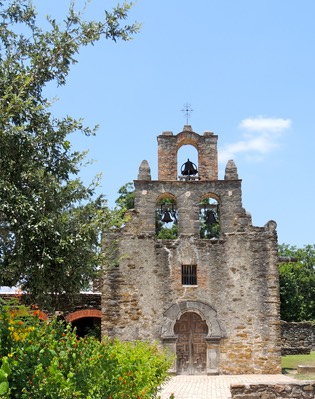
Between 1718 and 1731, a string of missions were built along the San Antonio River: the Alamo, Mission San Jose, known as the Queen of the Missions, Mission Concepcion, Mission San Juan Capistrano and the south most mission, Mission San Francisco de la Espada. This mission was originally established in 1690 in Weches, Texas, 153 miles southeast of present-day Dallas. Like so many of the missions, Espada had a turbulent history, but was finally relocated along the banks of the San Antonio River in 1731.
The purpose of these missions was to convert local Native Americans to Christianity and to secure the territory for Spain. The natives to this area, the Coahuiltecan Indians, learned vocational skills (blacksmithing, weaving, brick and stone laying, carpentry and farming) to provide products and food for people in and around the security of the missions. The missions also became economic trade centers that included livestock and crops. During the late 1700s and early 1800s, all the missions fell into a state of neglect because of secularization. However, in the early1900s, the Catholic Church regained control and responsibility and, since then, there has been a diligent effort to preserve the structural, historical and spiritual significance of these magnificent treasures.
Missiom Espada is active parish within the Archdiocese of San Antonio.

One of the interesting historical features of Mission Espada is the aqueduct system known as the Espada Acequia. This method of bringing water to arid farmlands dates back to the Romans and Moors. The construction of a fifteen-mile network of gravity-flow channels was overseen by the Franciscan missionaries and was used to irrigate 3,500 acres of farmland.
In 1978 Mission San Francisco de la Espada and other missions along the San Antonio River became part of the San Antonio National Historical Park and in 1982 a legal opinion by the U.S. Department of Justice allowed the National Park Service to manage the parks, and the Archdiocese of San Antonio to use the missions as churches, creating a unique relationship between these two entities.
No visit ti Mission San Francisco de la Espada-Mission Espada- is complete without a visit to the acequias, a system of gravity-flow channels that once irrigated the mission's farmlands.
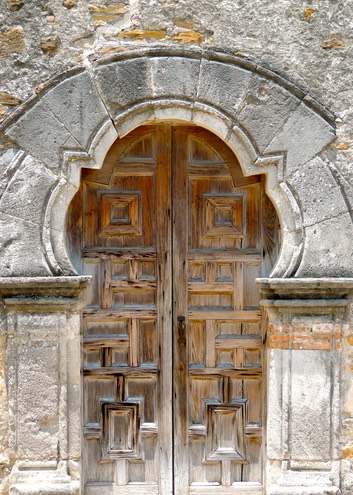
DURING YOUR VISIT
Like so many of the other missions in this area, this was a walled community for protection against warring indian tribes and bandits. Remains of the Indian Quarters and the Granary are highly visible.
Take note of the church’s three iconic mission bells in the bell tower and the beautifully carved door and stone frame that leads you into the small church. Mission Espada is an active parish and offers Mass every Saturday at 6:00 p.m. in English and Sunday at 10:00 a.m. in Spanish.
Inside the Visitor Center, open 9:00 to 5:00 daily (closed Thanksgiving, Christmas and New Year's Day), are many artifacts from the early era of Mission Espada. Through a large glass window, you can see into a circular bastion where defenders of the mission could shoot from behind thick stone walls. In October of 1835 James Bowie and James Fannin made Mission Espada their headquarters during the Texas War for Independence.
Don’t forget your camera. There are many great photo opportunities throughout the site, including this impressive door (right) that less to the small church in the grounds of Mission Espada on San Antionio's southeast side.
DIRECTIONS: From La Vernia, take Highway 87 to SE Loop 410; take a left on 410 to exit 44. Once on the access road, take the road that curves to the right and then take the first left onto Espada Road to the mission (26 miles). After your tour of the mission, take a right turn out of the parking lot onto Espada Road and follow the signs to the Espada Aqueduct (1½ miles).
There are no fees charged for visiting Mission Espada or the Espada Aqueduct making this Everyday Journey not only educational and inspiring, but economical as well.
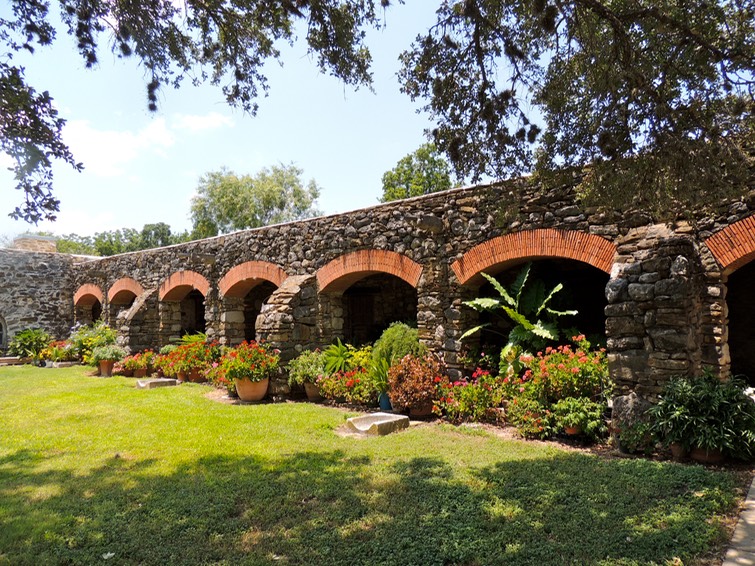
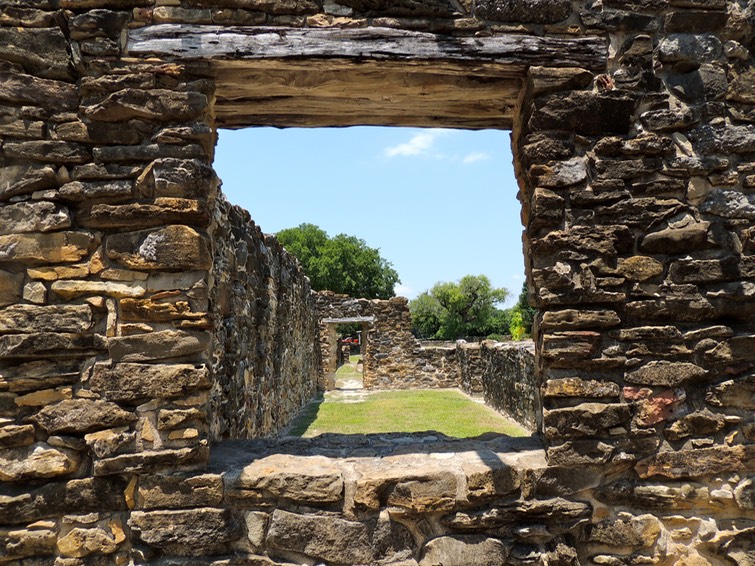
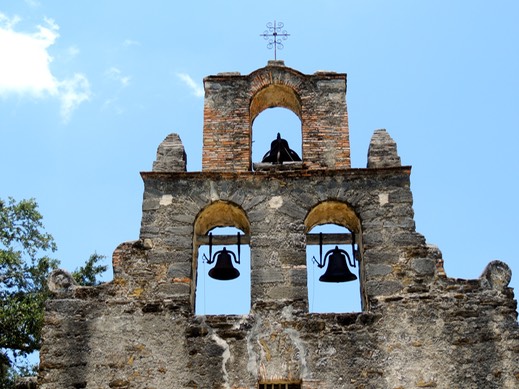
The Passage Way To Heaven
The Bells that Call